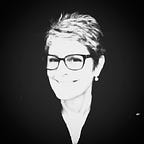Crusadrix (working title)
A Story of Transformation
Another story was told of a Crusader woman, wrapped in a green cape, who kept killing the attackers with shots from her longbow until she was finally killed. Her longbow was brought to Saladin, who was amazed. [the siege of Acre; July, 1191]
Handfuls of Christian captives were brought before [Saladin], including a group of fourteen that included a woman in full battle gear. [the Plain of Sharon; August, 1191] — James Reston, Jr.; Warriors of God: Richard the Lionheart and Saladin in the Third Crusade; 2001
Set in the twelfth century, in another time of religious hatred, a young noble woman flees a political marriage arranged after her father’s sudden death. Trained in martial skills by an indulgent father, she disguises herself as a crusader and sets off across Europe with a faithful retainer. Her goal, to find her beloved brother in the army of Richard the Lionheart and bring him home from the Holy Land.
The experiences of her journey shatter the beliefs and prejudices of her cloistered youth, leaving her disoriented and ambivalent about her faith, actions, identity, and place in the world. Against the backdrop of the Third Crusade, we watch her transform through her soul-searching letters to her younger sister.
Ever since I read those two brief snatches in the 270-some pages of Reston’s book, I have been dogged by the question of who these women crusaders were: How did they gain the skill to draw a longbow (six feet long and 100 pounds of draw) or do battle in full armor (90 pounds of steel)? How did they outfit themselves for such an expensive endeavor? What drove them to join the crusader army? What was their transit to the Holy Land like? How did they interact with the male warriors? How did they interact with other women? What were they thinking when they encountered cultures and religions so different from their own? What would their experience have been if they were captured?
Through this historical novel I intend to explore these unanswered questions. I also intend to explore issues of hatred and intolerance (religious, ethnic, gender, and sexual) that are still with us through the eyes of a medieval woman, through fresh eyes.
This novel (or will it be a trilogy?) will be long in the making, because I need to immerse myself in the culture, religions (Christianity, Judaism and Islam), politics, military campaigns, historical figures (did you know Richard I was probably gay?) and daily minutiae of the time.
